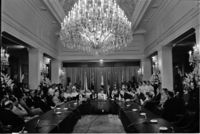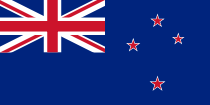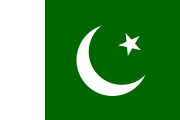Southeast Asia Treaty Organization
|
|||||||||||||||||||||||||


The Southeast Asia Treaty Organization (SEATO) was an international organization for collective defense which was signed on September 8, 1954. The formal institution of SEATO was established at a meeting of treaty partners in Bangkok in February 1955.[1] It was primarily created to block further communist gains in Southeast Asia. The organization's headquarters were located in Bangkok, Thailand. SEATO was dissolved on June 30, 1977.
Contents |
Members
 Australia
Australia France
France New Zealand
New Zealand Pakistan (including East Pakistan, now Bangladesh)
Pakistan (including East Pakistan, now Bangladesh).svg.png) Philippines
Philippines Republic of China (Taiwan)
Republic of China (Taiwan) United Kingdom
United Kingdom United States
United States
Dialogue Partners
History
SEATO was planned to be a Southeast Asian version of the North Atlantic Treaty Organization (NATO), in which the military forces of each member would be coordinated to provide for the collective defense of the members' country. SEATO did use portions of the military forces of its members in annual joint training maneuvers.
The membership of SEATO reflected a mid-1950s' combination of "out of area" powers and "in area" pro-Western nations. France, the United Kingdom, and the United States represented the strongest Western powers. Australia, Thailand, the Philippines, and New Zealand represented Europeanized or pro-Western nations in the Southeast Asian area.
Pakistan was included not only because East Pakistan (now Bangladesh) was geographically close to Southeast Asia, but possibly because Pakistan was a member of the pro-Western Central Treaty Organization (CENTO) alliance. Thus the pro-Western, anti-communist military alliances of the Mid-east and Southeast Asia were linked by the membership of Pakistan in both.
Despite being intended to provide a collective, anti-communist shield to Southeast Asia, SEATO was unable to intervene in the conflicts in Cambodia, Laos, and Vietnam because an intervention required a decision of unanimity, which was never reached; France and the Philippines objected. Intervention in the Vietnam conflict was sought again later, but France and Pakistan withheld support.
Unlike the NATO alliance, SEATO had no joint commands with standing forces. Also unlike NATO, an attack on one member was not automatically considered an attack on all. Consequently, each member could effectively block any or all collective SEATO action. Given the declining interest of France (after 1954) and the United Kingdom (after the end of the Indonesian-Malaysian conflict, in 1966) in Southeast Asia, SEATO failed to be effective as a collective security organization.
Because of the 1954 Accords settling the First Indochina War, South Vietnam, Cambodia, and Laos were not SEATO members. The United States sought, but failed, to make the Vietnam War into a SEATO collective defense problem.
Consequently, questions of dissolving the organization arose as early as 1973. Pakistan withdrew on November 7, 1973. and France withdrew on June 30, 1974. The organization formally ended in 1977.
Organizationally, SEATO was headed by the Secretary-General, with a council of representatives from member nations and an international staff. In addition to joint military training, the organization did some work on mutual social and economic issues.
SEATO was created as part of the Truman Doctrine of creating anti-communist bilateral and collective defense treaties. These treaties and agreements were intended to create alliances that would contain communist power. This policy was considered to have been largely developed by American diplomat and Soviet expert George F. Kennan. President Dwight D. Eisenhower's Secretary of State John Foster Dulles (1953-1959) was the primary force behind the creation of SEATO, which expanded the concept of anti-communist collective defense to Southeast Asia.
See also

- ANZUS
- ASEAN
- Central Treaty Organization (CENTO)
- NATO
- North American Aerospace Defense Command (NORAD)
- Organization of American States (OAS)
References
- ↑ Wah Kin Chin, Suryadinata Leo. Michael, Leifer Selected Works on Southeast Asia.
- Kai Dreisbach : USA und ASEAN. Amerikanische Aussenpolitik und regionale Kooperation in Südostasien vom Vietnamkrieg bis zur Asienkrise, Trier 2004, ISBN 3-88476-656-2 (German)
External links
- Copy of the Southeast Asia Collective Defense Treaty (Manila Pact); September 8, 1954, from Yale Law School
|
||||||||||||||||||||||||||||||||||||||||||||
